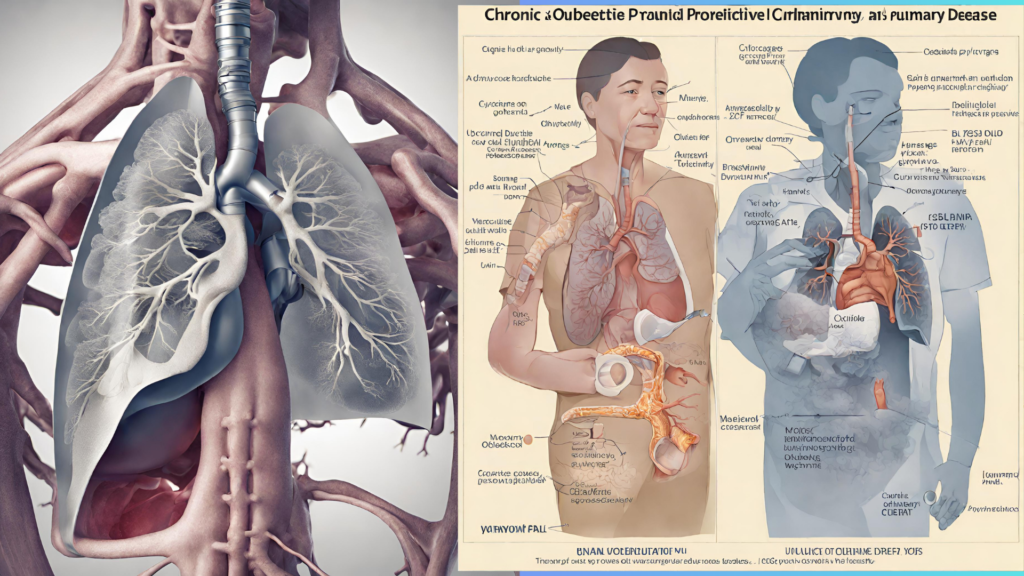Chronic Obstructive Pulmonary Disease is a type of lung disease that makes it hard for air to get out of your lungs. You may have breathing issues, coughing, mucus production, wheezing, and other symptoms. It’s usually caused by being exposed to really irritating gases or particles, usually from smoking cigarettes. People who have COPD are more likely to get heart disease, cancer, and other health issues.

What is Chronic Obstructive Pulmonary Disease (COPD)?
Chronic Obstructive Pulmonary Disease is a widespread lung condition that restricts air flow and causes breathing difficulties. It is also referred to as Emphysema and Chronic Bronchitis. The lungs can become damaged or blocked due to the accumulation of mucus.
Common symptoms of COPD include coughing, sometimes accompanied by droplets of mucus, difficulty breathing and wheezing, as well as fatigue.Smoking and air pollution play a major role in the development of COPD, and those with the condition are at an increased risk of developing other health issues.
Although there is no cure for COPD, it can be managed through medication, oxygen therapy and pulmonary rehabilitation. Additionally, those with COPD can benefit from avoiding smoking and being exposed to air pollution, as well as receiving vaccines to prevent infection.
Chronic Obstructive Pulmonary Disease (COPD): Key Facts
- Chronic Obstructive Pulmonary Disease is the world’s 3rd leading cause of death, resulting in 3.23 million fatalities in 2019. COPD is the leading cause of death among people under 70 years old.
- Low- and middle income countries (LMICs) account for nearly 90% of all COPD-related deaths.
- COPD ranks as the 7th most common cause of poor health in the world (as measured by disabled-adjusted life years).
- In high-income countries, tobacco smoking accounts for more than 70% of cases of COPD. In LMICs, tobacco accounts for 30-40% of cases. Household air pollution is a significant risk factor for COPD.
Who's more at risk of developing COPD?
People with COPD have a lot of risk factors, like smoking, which is the main one.
A lot of people with COPD smoke, or have used to smoke, and have been exposed to other smoke, pollution, chemical fumes, and dust for a long time.
Plus, most people with COPD are over 40 when their symptoms start.
Genetics can also play a role in COPD, since people with asthma have a higher risk of getting it than those without it. But the majority of people with asthma don’t get COPD.
What are the stages of Chronic Obstructive Pulmonary Disease?
People with Chronic Obstructive Pulmonary Disease can start feeling short of breath with simple activities like walking up stairs, but it can get worse over time. It’s easy to blame COPD on being too physical or getting older, so many people don’t know they have it. You may also have a cough with mucus in the morning, which is an early sign of COPD.
With more advanced COPD, you may still feel short of breath even with everyday activities. Exacerbations are more common in the later stages of COPD, and you’re more likely to get lung infections like pneumonia and bronchitis. When COPD gets really bad, it can limit your mobility and you may need to use a portable oxygen tank.
Can you stop COPD from happening?
Chronic Obstructive Pulmonary Disease (COPD) is the most common lung condition caused by smoking. The best way to avoid it is to quit smoking, but you also need to be aware of other things that can irritate your lungs, like other people smoking, pollution in the air, chemicals, and dust.
